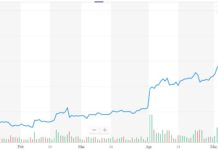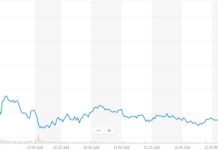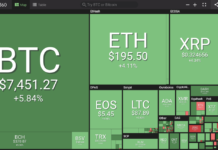[ad_1]
On January 9, CCN reported that 13 financial institutions have started to utilize the Ripple blockchain through RippleNet, bringing the total number of banks in the Ripple ecosystem to 200.
Fintech applications and banks in the likes of Euro Exim Bank, SendFriend, and JNFX have integrated RippleNet for liquidity and instant settlement of payments that reportedly presents faster, more transparent, and low-cost alternatives to traditional settlement systems such as SWIFT.
Brad Garlinghouse Responds to Ripple Critics
In an official announcement, Brad Garlinghouse, the CEO of Ripple, said that 100 financial institutions joined RippleNet last year and that the blockchain network is seeing a 350 percent increase in live payments.
Following a positive year in 2018, Garlinghouse disclosed that RippleNet is signing two to three clients on a weekly basis, mostly composed of financial institutions that are in need of settling cross-border payments efficiently.
JNFX head of emerging markets Ashay Mervyn, for instance, said that RippleNet is highly cost-effective when processing payments for international clients.
Mervyn said:
Payments between countries are beset with inefficiencies—inefficiencies around cost, inefficiencies around speed and inefficiencies around transparency. RippleNet is specifically geared to address these problems. For our customers who range from the largest conglomerates in Africa (with operations and commitments in over 40 countries) to individuals in villages in rural Nigeria, our decision to join RippleNet and utilize their payment solution—including XRP for on-demand liquidity—just makes sense.
In a separate statement, Ripple CEO Brad Garlinghouse noted that critics of Ripple claimed XRP will not be utilized by banks in the foreseeable future. However, he explained that Ripple is seeing an increase in demand for RippleNet, especially for cross-border and international payments.
“Last year some notable critics said financial institutions would never use a digital asset in their payment flows. As I said then, if it offers their customers a better experience at a lower cost, they will – and they are,” Garlinghouse added.
What is Ripple Targeting?
Currently, Ripple is attempting to penetrate into the $2 trillion global payments market that is dominated by SWIFT.
In the short-term, it is improbable for large banks and financial institutions to completely switch to RippleNET and Ripple’s liquidity solutions because major banks control the SWIFT network and they have the incentive to rely on the existing infrastructure.
It is possible for Ripple to continue to target small banks and fintech applications as seen in the new clients it signed this week in an attempt to create an ecosystem of its own and compete with SWIFT by making large banks use RippleNet to communicate and deal with smaller banks in both established and emerging markets.
For now, RippleNet has to sustain its growth rate if it envisions to compete with global settlement systems and find ways to bring in major financial institutions into its ecosystem because ultimately, the value of a settlement network comes from the institutions that operate on top of the network, adding to the liquidity.
Featured image from Flickr.
[ad_2]
Source link




